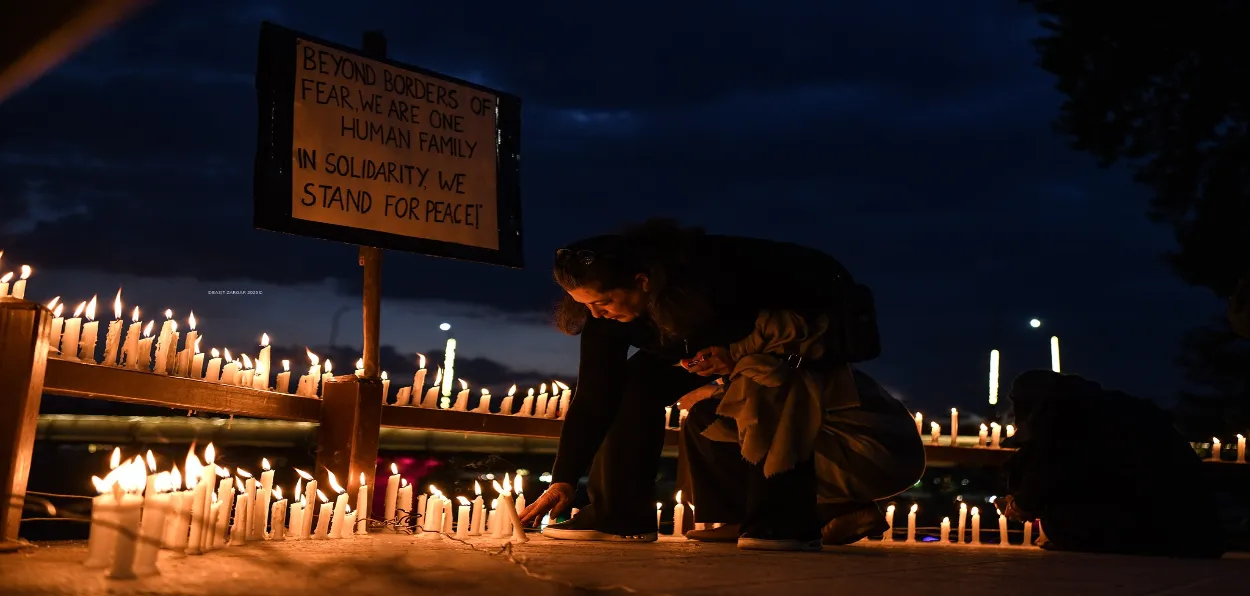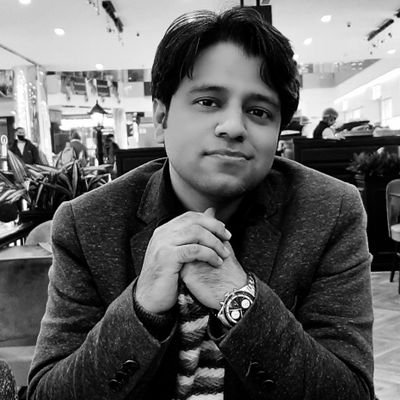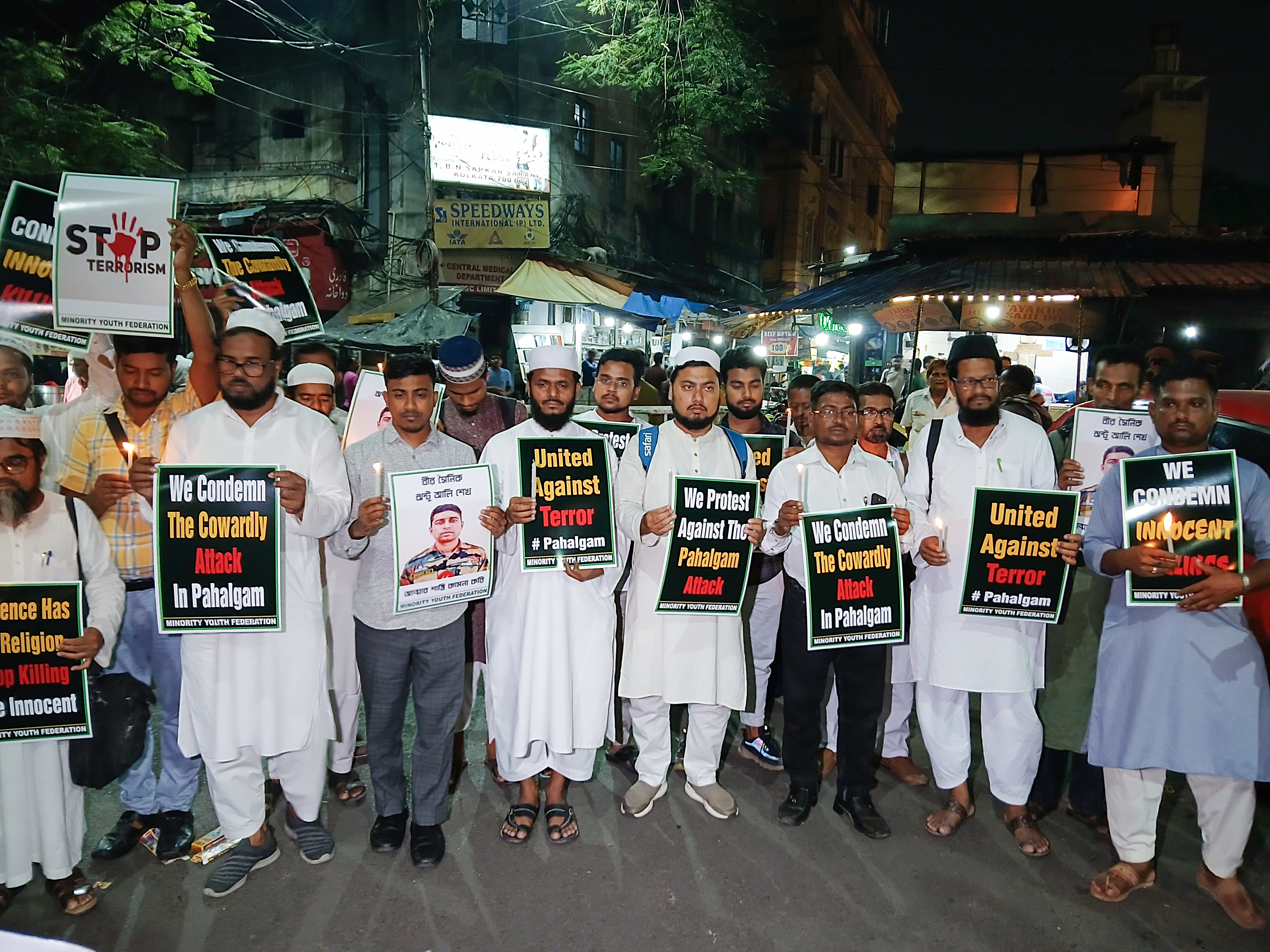
 Saquib Salim
Saquib Salim
For centuries Indian civilization has been at the battle with the forces who want to destroy India. There is not an iota of doubt in the minds of the enemies of India that the strength of this civilization lies in its ‘unity in diversity’. They know that despite diverse languages, races, religions, castes, and classes all the Indians see themselves as one single unit. To subdue this ancient civilization they have to break this unity. For the last, at least, 200 years India has been enduring constant attacks against its unity and the recent terrorist attack at Pahalgam is the newest addition to the list.
As is quite well known by now. The terrorists at Pahalgam in Kashmir specifically targeted Hindu men. It has been reported that they asked for names, forced them to recite Quranic verses to verify religious identity, and shot them dead after confirming their Hindu identities. The gory details were narrated by women and children who were made to witness and left to tell the world about the massacre.
Why did these terrorists, allegedly from Pakistan, make a spectacle of killing Hindus? They could have fired indiscriminately at a crowd of tourists and it would have also resulted in the deaths of more Hindus than Muslims. They could have killed whole families and the death toll would have been bigger. But, they chose to make a statement. They told the world, especially the Indian public, that Hindus were under attack and killers were Muslims.
What did they want to achieve? They wanted to create suspicion and hatred, in the minds of Hindus towards Muslims in general and Kashmiri Muslims in particular. Even if a few Hindus act upon this hatred, the actions would further create hate among Muslims towards Hindus. The terrorists wanted to start a chain reaction of sorts where hatred and suspicion for one community begets more hate. They tried to hit upon the very root of Indian civilization.
India is not oblivious to such tactics of its enemies. The British colonizers learned that to rule India the communal divide should be transformed into communal violence after ruling India for almost a century.
In 1757, the Army of the English East India Company defeated Nawab of Bengal to establish administrative control over Indian territory. Soon after, they faced the first challenge from a united militia of Fakirs and Sanyasis in Bengal, Bihar, and U.P. In the late 18th century Muslim Sufis and Hindu Sanyasis organised armies of peasants to fight against British rule. Later on, they fought along with Tipu Sultan, at Vellore Mutiny, alongside Marathas, and in 1857 at Jhansi, Lucknow, Delhi, etc.
In 1857 the Indian people rose in a popular national revolt against the alien rule. Hindus and Muslims joined hands with a cry of diin diin (religion) at Meerut and chose Bahadur Shah Zafar as their leader. V. D. Savarkar, pioneer of Hindutva ideology also noted the event, “So, in the truer sense, we said that the raising of Bahadur Shah to the throne of India was no restoration at all. But rather it was the declaration that the longstanding war between the Hindu and the Mahomedan had ended, that tyranny had ceased, and that the people of the soil were once more free to choose their monarch. For, Bahadur Shah was raised by the free voice of the people, both Hindus and Mahomedans, civil and military, to be their Emperor and the head of the War of Independence.”
At Jhansi, Muslims led the artillery for Rani Lakshmibai. Azimullah engineered the revolt of Nana Saheb. Zulfiqar led the charge for Kunwar Singh. Bahadur Shah Zafar banned cow slaughter in Delhi. After the rebellion was suppressed, all the inquiry commissions concluded that if Hindus and Muslims remained united India could not be controlled. To keep India weak and vulnerable these two religious communities should turn hostile towards each other.
The British government funded several individuals and outfits to achieve this communal discord. Communal organizations were promoted. Indians would keep fighting among themselves rather than strengthening the country and fighting against alien rule.
 Minority Youth Federation members take part in a candlelight vigil to protest against the Pahalgam terror attack, in Kolkata
Minority Youth Federation members take part in a candlelight vigil to protest against the Pahalgam terror attack, in Kolkata
At the turn of the 20th century, leaders started fighting against these designs. Gopal Krishna Gokhale made it his mission to achieve Hindu-Muslim unity. Maulana Abul Kalam Azad himself joined a Hindu outfit of Aurobindo Ghosh and encouraged Muslims to join. The Ghadar Party, during the First World War, also achieved this unity. Ulema of Deoband, Arya Samaj, Bengali Hindus, and Ghadar Party joined hands to form a united front and formed a government in exile at Kabul in 1916.
Mohandas Karamchand Gandhi entered the Indian political arena at this time. For the first time since 1857, he transformed the struggle against British rule into a truly mass movement.
Gandhi stressed the need for Hindu-Muslim Unity and Hindu Musalman ki Jai (victory to Hindus and Muslims) became the slogan of his movement. The impact can be assessed from the fact that General Dyer, before carrying out the massacre at Jallianwala Bagh, told his son, “Mussulmans and Hindus had united. I have been expecting this, there is a very big show coming.”
Intelligence reports show that the British considered acts of Hindus and Muslims celebrating festivals together an act of sedition. They felt threatened when Hindu Sanyasis addressed people at several mosques in 1919 and 1920. Maulana Azad was seen as a dangerous revolutionary when he invited Hindus into mosques to listen to sermons. More and more money was pumped into communal organisations to foment communal violence.
India became a battleground where on the one hand there were secular forces fighting against the British, on the other communal forces wanted Indians to fight among themselves. Muslim League, Hindu Mahasabha, Akalis, etc. represented the latter. Though in the minority, these forces could incite violence in different places. During the 1920s and 30s, India witnessed several communal riots. These kept a united Indian front weak.
During the Second World War, when the Indians were determined to ask for freedom under a Muslim, Maulana Azad, the Muslim League asked for a separate state. It was much needed for British imperialism. They presented the excuse that India could not be freed until Hindus and Muslims settled disputes. Indian Ulema (Sunni as well as Shia), and other more than 20 Muslim organisations joined hands to reject M. A. Jinnah but the British would not accept them as legitimate Muslims.
Elsewhere in Germany, Italy, and South-East Asia, Muslims and Hindus were fighting against the British on the battlefield. Azad Hind Fauj led by Subhas Chandra Bose was a truly secular organisation and after the war when its officers were tried in India again Hindus, Muslims, and Sikhs came out in support.
This unity was frightening for the British Empire and led to its exit from India. The Birtish knew that Jinnah's divisive rant was superficial and the Indian society was united. The Naval Mutiny and INA trials had displayed India's inherent unity. They left India but not before dividing it. Now India had to live with a neighbour whose whole existence is based upon hate towards her.
Since then, Pakistan’s ISI has taken up the unfinished task of the British. They try to keep a pot of communal violence boiling in India. There have been several admissions and investigations to prove that many times over the last 70 years Pakistan has engineered communal violence in India. The motive is: To weaken India by internal strife and to show India's vulnerability to investors.
ALSO READ: Maharashtra to build house for family of Pahalgam attack hero Adil Shah
Public didn't fall for the designs of these terrorists and their masters. What we should understand is that they want us to fight among ourselves and weaken our own country. Rather, we should unite with each other and hunt them from wherever they are on this planet to punish them for their crime against humanity.
